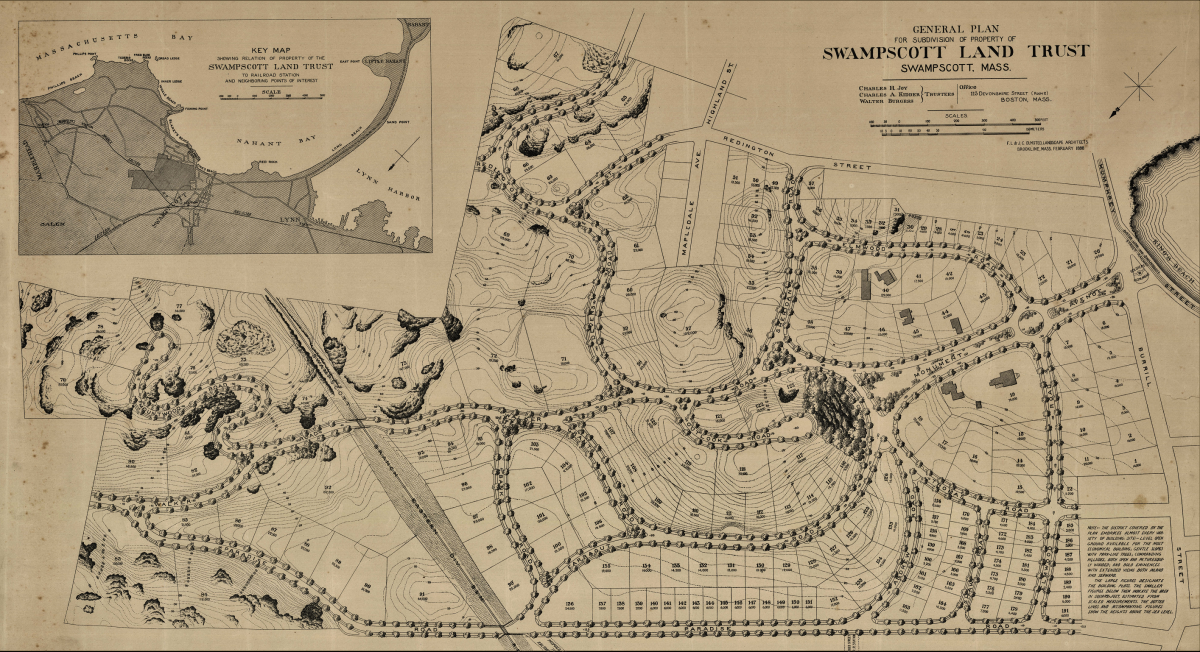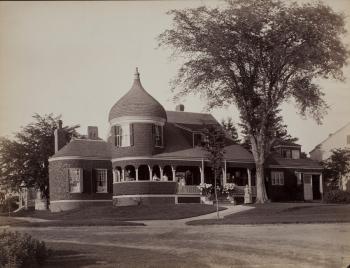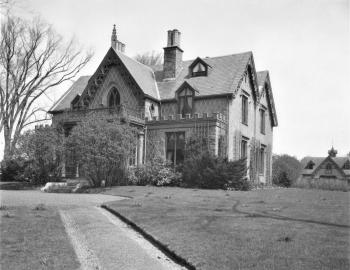Olmsted Historic District, Swampscott, Massachusetts

The Olmsted area of Swampscott is a large residential area whose borders were laid out by Frederick Law Olmsted (1822-1903). Prior to subdivision, all of the land was held by Enoch Reddington Mudge (1812-1881). Mudge purchased a 130 acre property in 1843, a portion of which was the original Humphrey estate and Burrill estate. He constructed a large Gothic Revival house, pictured below, with at least a half dozen large out buildings scattered near the main house.
After Mudge’s death in 1881, the properties were administered by trustees, who sold the land in 1887 to the Swampscott Land Trust. The Trust commissioned the Olmsted firm to prepare the subdivision plan dated 1888.
Frederick Law Olmsted, who had moved to Brookline in 1883, established the first full-scale professional landscape architectural firm in the United States. Olmsted, who has been referred to as the “Father of Landscape Architecture,” is best known for having designed Central Park in New York City, the Niagara Reservation in Niagara Falls, NY and the Emerald Necklace in Boston. The Swampscott Land Trust project, with its islands of lawns and winding roads, was his final project prior to retiring.
The Mudge estate with its outbuildings was assigned its own 75,000 sq. ft. lot in the subdivision, and Elihu Thomson, the founder of General Electric, purchased a choice property within the Olmsted district across from the Mudge estate which became Swampscott Town Hall. Note the significant amount of landscaping on the perimeter of the Thomson property (now absent). Newly planted trees are evident on the median strip, as is a sidewalk, neither of which remain today due to street widening and reconfiguration.
 |  |
Houses in the Olmsted District reflect the architectural styles popular in New England in the late 19th and early 20th centuries- Queen Anne, Shingle Style, Colonial Revival, Dutch Colonial, Arts and Crafts, Bungalow, and American Foursquare. The survival of many of their key features and details are what gives the district its character and significance. The vast majority of the houses constructed for the district have survived, and few have been significantly altered from their original form and finish.
Monument Avenue as originally designed by Frederick Law Olmsted was a sweeping symmetrical carriage road. Note the extensive plantings on the median strip, and the lush hedge and other plantings on the Elihu Thomson property. Most of the approximately 250 homes in the Olmsted district were built within a 30 year period following the subdivision plan. Olmsted used three lot sizes to accommodate three sizes of homes and varying incomes.
The Olmsted district was listed on the National Register of Historic Places on July 1, 2002 and it became a Local Historic District on May 5, 2014.

| >> Swampscott Historic Landmarks | >> Swampscott Fish House |
| >> Andrew's Chapel | >> Elihu Thomson House |
| >> Lilac Garden |
